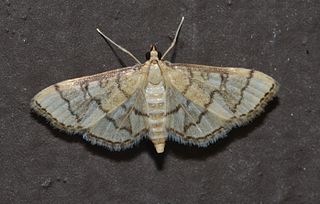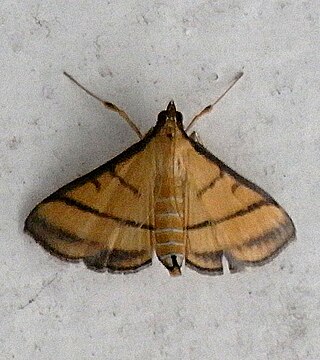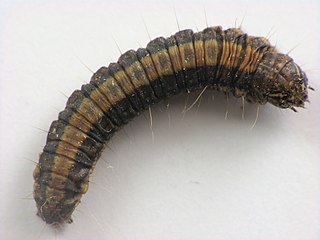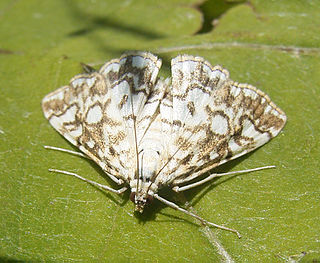
Pyraustinae is a large subfamily of the lepidopteran family Crambidae, the crambid snout moths. It currently includes about 1,280 species Most of them tropical but some found in temperate regions including both North America and Europe.

Spilomelinae is a very species-rich subfamily of the lepidopteran family Crambidae, the crambid snout moths. With 4,135 described species in 344 genera worldwide, it is the most speciose group among pyraloids.

Omiodes is a moth genus in the family Crambidae. Several species are endemic to Hawaii.

Aulacodes is a genus of moths of the family Crambidae. The genus was first described by Achille Guenée in 1854.

Blepharomastix is a genus of moths of the family Crambidae described by Julius Lederer in 1863.

Bradina is a genus of moths of the family Crambidae.

Cnaphalocrocis is a genus of moths of the family Crambidae. The genus was described by Julius Lederer in 1863.

Diathrausta is a genus of moths of the family Crambidae. The genus was described by Julius Lederer in 1863.

Dichocrocis is a genus of moths of the family Crambidae. The genus was described by Julius Lederer in 1863.

Glyphodes is a genus of moths of the family Crambidae described by Achille Guenée in 1854.

Pyrausta is a speciose genus of moths of the family Crambidae. The genus was erected by Franz von Paula Schrank in 1802.

Pycnarmon is a genus of moths of the family Crambidae described by Julius Lederer in 1863.

Syllepte is a genus of moths in the family Crambidae.

The Epipaschiinae are a subfamily of snout moths. More than 720 species are known today, which are found mainly in the tropics and subtropics. Some occur in temperate regions, but the subfamily is apparently completely absent from Europe, at least as native species. A few Epipaschiinae are crop pests that may occasionally become economically significant.

Acentropinae is a fairly small subfamily of the lepidopteran family Crambidae, the crambid snout moths. Species of this subfamily are exclusively found in wetlands and aquatic habitats.

Margaroniini is a tribe of the species-rich subfamily Spilomelinae in the pyraloid moth family Crambidae. The tribe was erected by Charles Swinhoe and Everard Charles Cotes in 1889, originally as family Margaronidae.
















